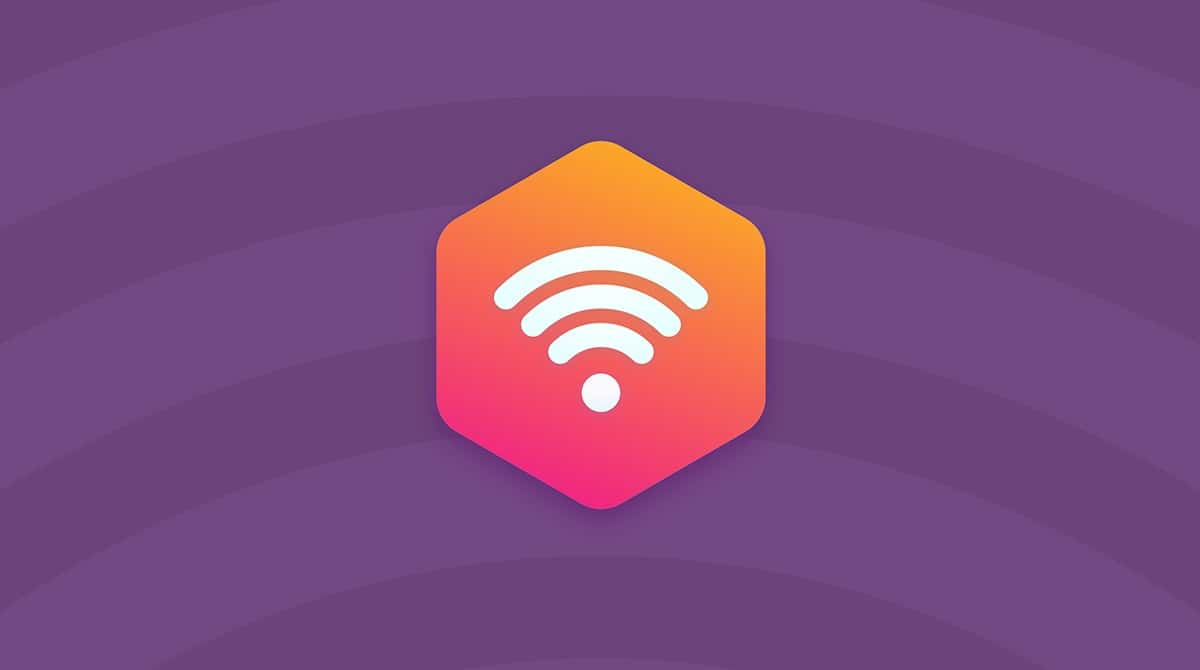As Mac users, we have something to be happy about when it comes to app crashes and freezes: rarity. Typically you can work on your Mac for hours at a time without a single issue. However, a crashing app certainly can happen, leading to lost productivity, time, and, worst of all, lost work. Fortunately, there are several steps you can take to recover from a crashed app and prevent the issue in the first place.
How to fix a crashing app after the macOS upgrade
App crashes after the macOS update is more than a common problem. Some apps freeze or malfunction, some won’t launch, some show no signs of life whatsoever. Why does it happen? The most probable reason is that the app is simply not ready for the latest macOS. Something in its depth turned out to be incompatible with the new macOS.
Now, what can you do to fix an app crashing? Three things.
- First, see if you have the latest version of the app by clicking on its name it the top menu and choosing Check for updates.
- Second, visit the developer’s website (or App Store page) and see if they’ve issued a statement about current macOS compatibility.
- Finally, some crashed apps can sometimes be fixed by running maintenance scripts. Download the Mac troubleshooting app, CleanMyMac, launch it, find the Maintenance tab and run the scripts (see details at the end of the article).
What happens when an app crashes: under the hood
Now let's go deeper into the nature of crashed apps, but first, let’s identify the difference between a crashed macOS app and a frozen one. While these terms are often used interchangeably, there is a notable difference.
Crash
A crash happens when a piece of software stops working altogether and then closes on its own. In other words, the app quits when you did not tell it to. When this happens, you'll typically see a message noting that the application has "unexpectedly quit” just as its windows disappear. It’s pretty frustrating — especially if you end up losing all your work.
_1611321047.png)
Freeze
A freeze is when the software stops functioning but continues to run. You can still see its windows, and its Dock icon still indicates that it’s running. However, no amount of clicking or tabbing around will do anything. A frozen app doesn’t quit as a crashed app does; it simply becomes unresponsive. Often no error messages accompany the freeze. Again, it’s a frustrating experience (if you want to know how to deal with it, check out this post on how to fix frozen apps).
When software freezes, you force it to quit so that you can re-launch and hopefully get on with your work. With crashes, meanwhile, the problem is the app quitting on its own. In this article, I’ll discuss recovering from app crashes, as well as steps that help prevent them in the first place. Let’s get started.

What to do when a Mac app crashes
The good news here is that a crashed app rarely brings down your entire Mac, as the trouble is restricted to that particular piece of software. That means we have a chance to recover. Let’s start with the simplest solutions.
First, just relaunch the app. When an app crashes, you’ll typically see a dialogue box that says the software “unexpectedly quit,” and you’ll have several options to deal with it, including “Relaunch.” Give that a click and cross your fingers that the crash doesn’t happen again. Often, you’re good from there. If not…
Try restarting your Mac. “Turn it off and back on again” is almost a punchline at this point, but it usually works. Shut down, restart, and try again. Very often, this simple task will set things right. If not, it’s time to try something just a little more involved.
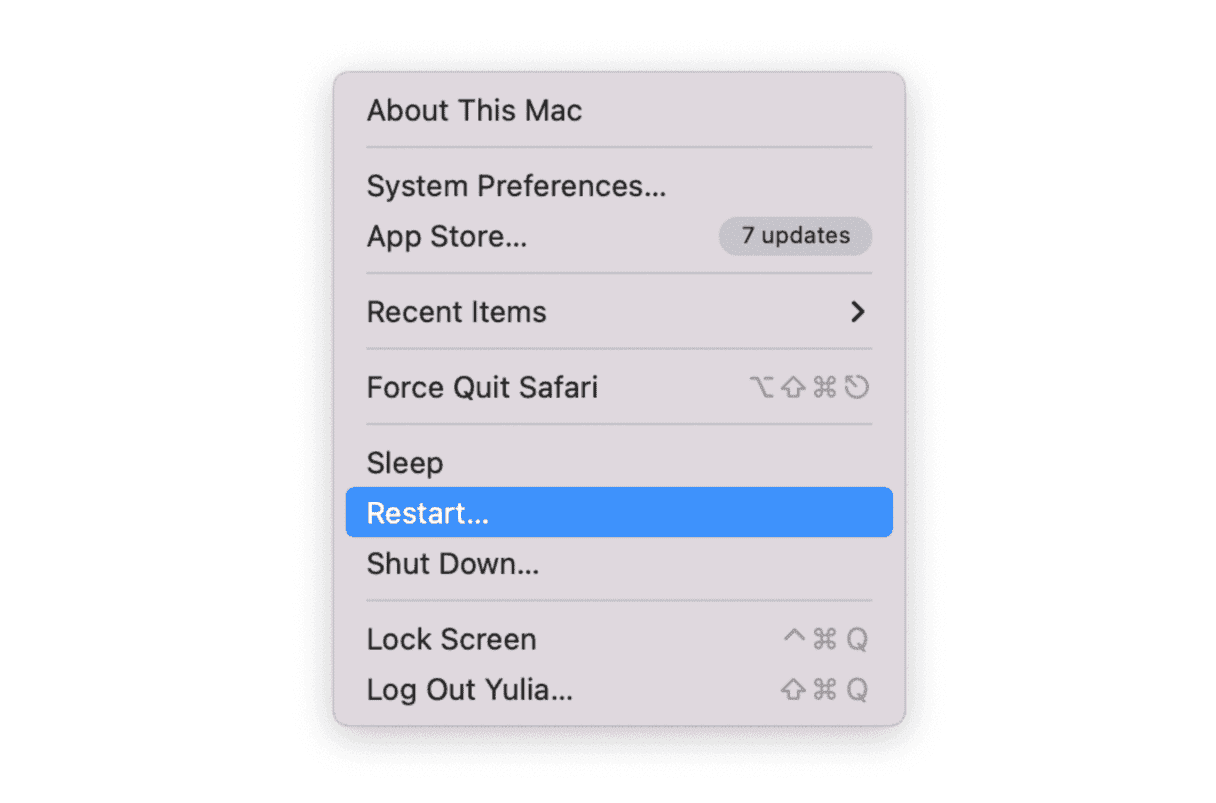
Reinstall the app. Deleting the misbehaving app and grabbing a new copy gives you a fresh version to work with. That is if you delete all of the app’s related files.
See, when you drag an app to the Trash, you aren’t deleting everything. Some leftover parts remain, and if the troublemaker is among them, your problem could persist. It’s a waste of time to delete an app via drag-and-drop, reinstall and then have it crash again. To make things right, you need to get rid of the app’s bits and pieces before you reinstall it, and this is where software like CleanMyMac comes in handy.
An app that’s simply dragged to the Trash leaves behind a pile of associated files that you don’t see, like caches, preferences (often the culprit in crashy apps), saved states, and other leftovers. You might not even know they’re there, but CleanMyMac does. It’s smart enough to find the whole lot, safely remove them, and ensure that a newly installed app is just that: a completely fresh start.
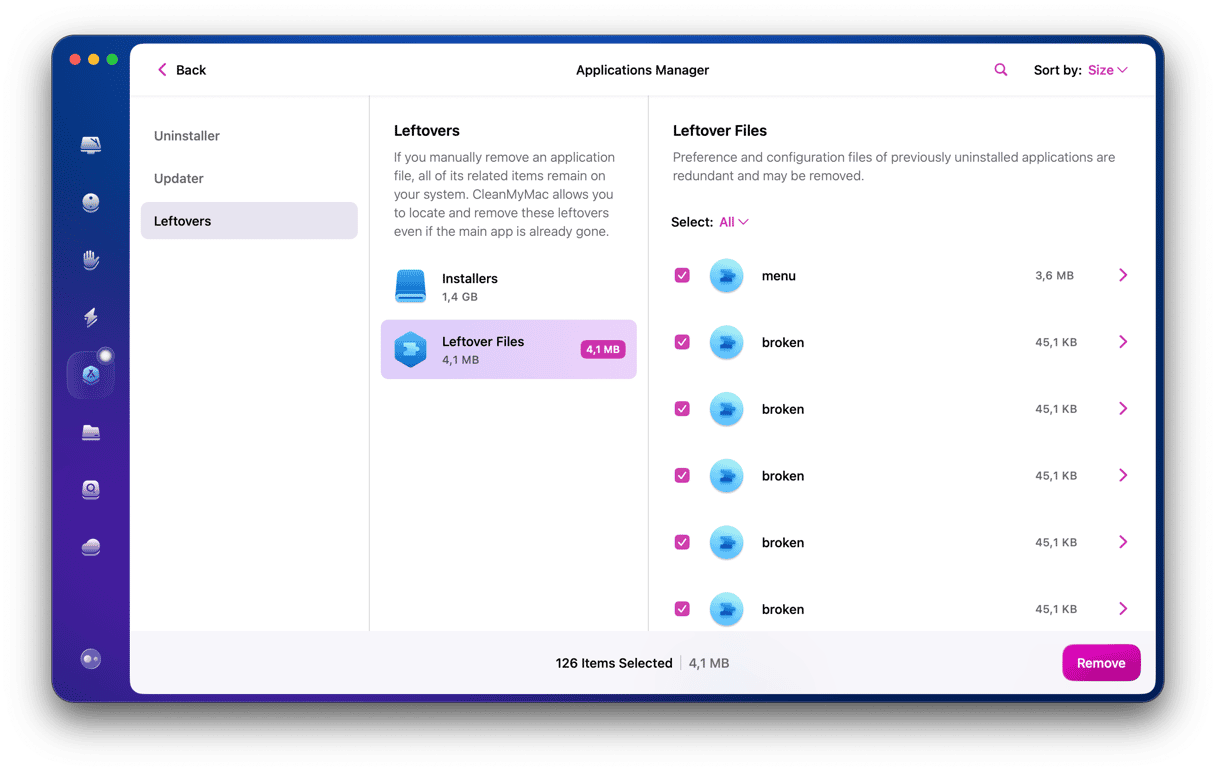
Another wise move is to make sure there are no conflicts between the app and the macOS. When Apple pushes an update of its operating system to your Mac, that might interfere with your app’s performance if the app or its add-ons are incompatible with this particular macOS version.
Reset SMC
SMC stands for System Management Controller, and it can be reset by restarting your Intel-based Mac in a special way. You can't reset SMC on M1 Macs — all settings stored in SMC are embedded in their processor. But, we'll show you how to reset SMC on Macs that still have them.
Macs with a removable battery:
- Shut down your Mac.
- Remove the battery.
- Press the power button and hold it for 5 seconds.
- Put the battery back in.
- Start up your Mac.
Macs with a non-removable battery:
- Shut down your Mac.
- Press Shift-Control-Alt (Option), and, while holding these 4 keys down, press the power button.
- Hold all 4 buttons down for ten seconds, then release them.
- Press the power button to start up your Mac.
Desktop Macs:
- Turn off your Mac.
- Pull out the power cord and wait for 15 seconds.
- Put the power cord back in.
- Wait 5 seconds, and then start up your Mac.
Resetting the SMC often fixes bugs, like incorrect time & date readings which can cause apps to crash.
Try resetting the app itself
CleanMyMac, developed by the iconic Mac developer, MacPaw, can help you out here, too. Download it for free, go to its Uninstaller module and find the misbehaving app in the list.
Now, you can either uninstall your app completely or reset it to its default state. The latter option is more convenient and should clear app-related cache files without deleting user data.
See if this method works on your Mac:
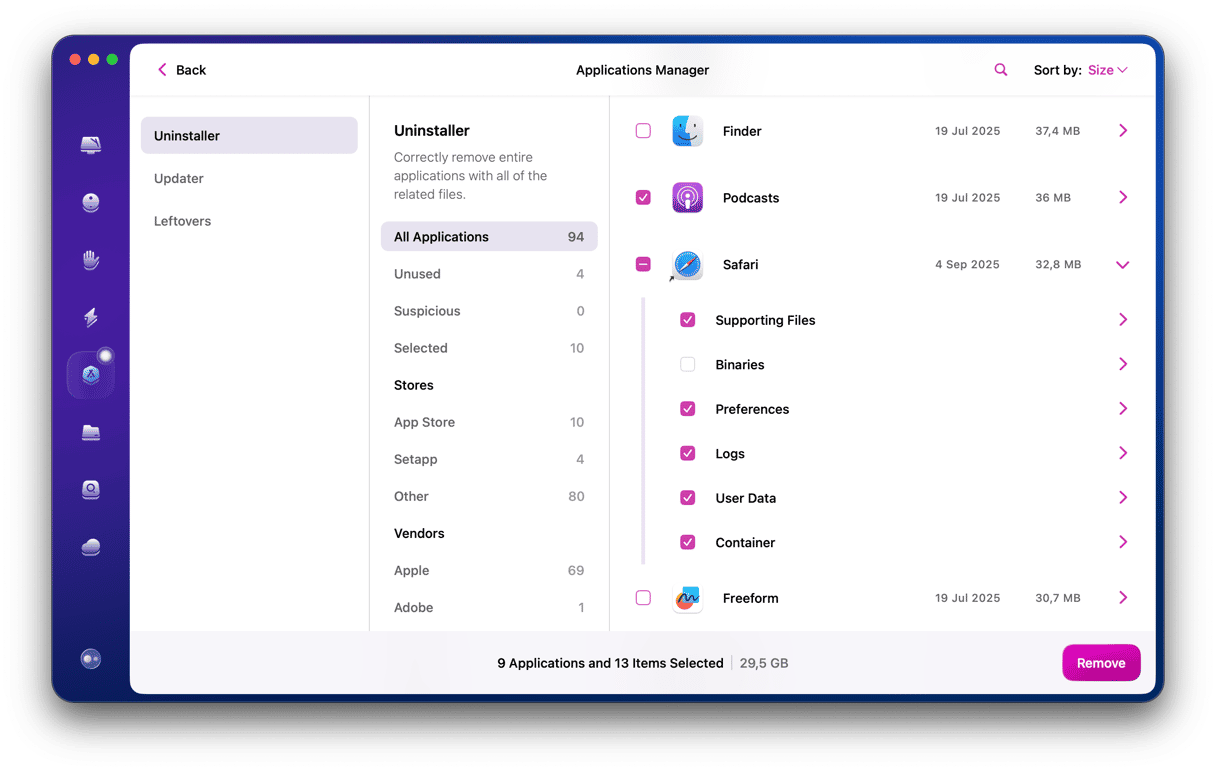
1. Launch CleanMyMac.
2. Click on the Uninstaller tab in the sidebar.
3. Select an app from the list and click on the dropdown menu under "Uninstall."
You'll see the additional "Reset" option appear.
Is your app crashing now? If it does, uninstall it using the same tool and download it again.
Update the app via the Mac App Store
How can you stay on top of aging apps? Apple makes it easy with software purchased through the Mac App Store. Simply launch the App Store app, go to the Updates tab, and you’ll see all available app updates. Find the one you need in the list, click the Update button, and you’ll get the latest version to your Mac. It’s a bit different with software acquired outside the App Store: you’ll have to visit the vendor’s website to see if there’s a new version available.

What to do when an app crashes at launch
So far, I’ve addressed what to do when an app crashes as you’re using it. But what about the frustrating scenario of an app going down as soon as you launch it? No warning, no dialogue box, just a bounce or two in the Dock, and that’s it. In this case, it’s time to repair disk permissions.
Repair disk permissions + Run maintenance scripts
Both you can do with the mentioned Mac maintenance app, CleanMyMac.
What does fixing permissions actually mean? Think of your Mac’s hard drive as a tree with many branches. The top level of your drive is the tree’s trunk, and the branches represent information about files and folders. These branches, or “nodes,” store information like the location of data and permission rules, among other things. Regular computer use changes this information and can lead to a conflict or other issue that generates crashes and the inability to use your system. This is what a permission fix addresses.
Another thing you can do is to run Maintenance Scripts. This helps resolve improper app behaviour like crashing and keeps all of your disk files and folders in proper order. And that’s just one of the maintenance tasks available in CleanMyMac, just try it.
- In the app, open the Maintenance tab.
- Select both Run Maintenance Scripts and Repair Disk Permissions.
- Click Run below.
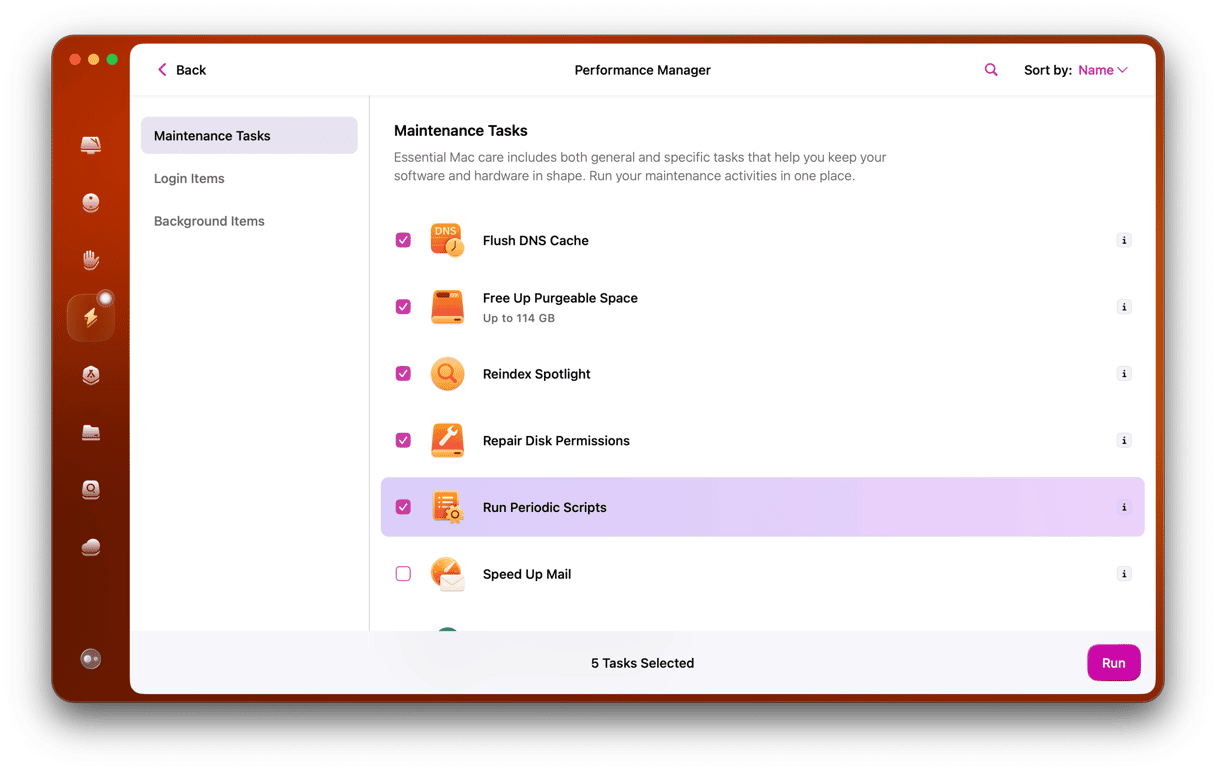
Now, try launching the crashing app and see if that helped.
A crashing app is no fun. Fortunately, a little understanding and proactive behaviour can keep them to a minimum. CleanMyMac makes it easy to do just that. Happy computing, and may your apps never crash again!






